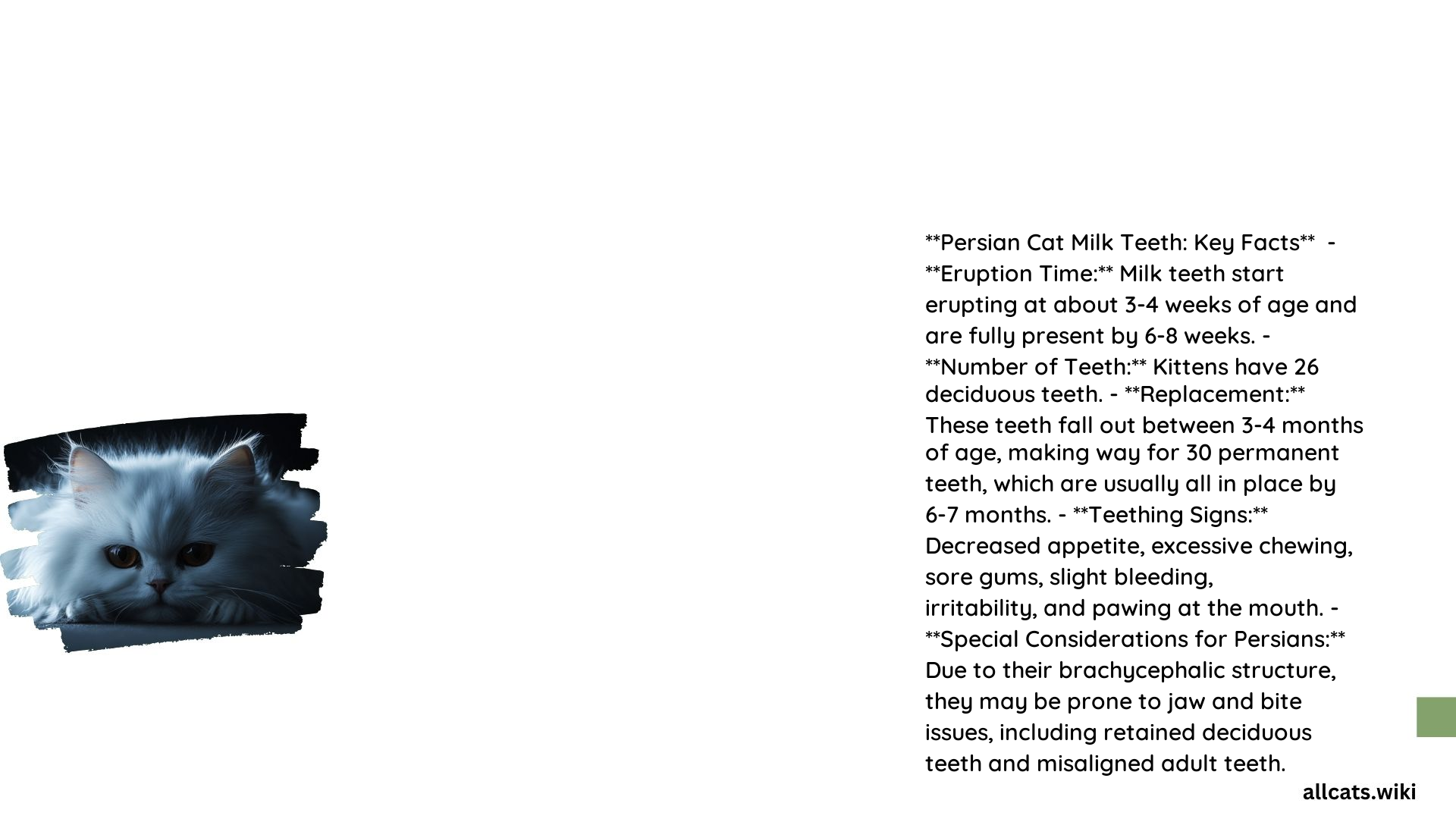Persian cats are known for their distinctive features, including their fluffy coats and adorable facial expressions. However, one aspect of their development that is often overlooked is the emergence and shedding of their milk teeth. In this comprehensive guide, we will explore the characteristics and timeline of Persian cat milk teeth, common problems associated with them, and the importance of proper dental care.
What is the Emergence Timeline of Persian Cat Milk Teeth?

Persian kittens, like other felines, begin to develop their deciduous (milk) teeth around 3 to 4 weeks of age. The first teeth to erupt are typically the incisors and canines, followed by the premolars. By 6 to 8 weeks of age, all 26 deciduous teeth should have erupted, including 12 incisors, 4 canines, and 10 premolars.
What are the Common Problems Associated with Persian Cat Milk Teeth?

Do Persian Cats Experience Persistent Deciduous Teeth?
Yes, sometimes the deciduous teeth do not fall out as they should, and they can cause problems with the eruption of permanent teeth. This can lead to malocclusion and other dental issues. If a persistent deciduous tooth is noticed, it is crucial to have it extracted by a veterinarian to prevent further complications.
Can Persian Cats Develop Dental Disease During the Milk Teeth Phase?
Yes, even during the milk teeth phase, Persian kittens can start to develop dental diseases. Regular monitoring and dental care are essential to prevent issues such as tartar buildup, gum disease, and other oral health problems.
How Can I Brush My Persian Cat’s Teeth to Prevent Dental Disease?
How Often Should I Brush My Persian Kitten’s Teeth?
It is recommended to start brushing your Persian kitten’s teeth as early as possible, ideally when you first bring them home. However, during the brief period when the baby teeth are falling out and the permanent teeth are erupting, it is advised to take a break from brushing to avoid discomfort.
What Techniques and Products Should I Use for Brushing?
Use a toothbrush and toothpaste specifically designed for cats. Human toothpaste is not suitable for cats due to its fluoride content. Start with gentle, short sessions to get your kitten accustomed to the process, and focus on the areas where the teeth and gums meet, as these are common sites for tartar buildup.
What are the Signs of Dental Problems in Persian Cats?
Some common signs of dental problems in Persian cats include:
- Drooling
- Reluctance to eat
- Irritability
- Swollen or inflamed gums
- Bad breath
- Visible tartar or plaque
- Missing or loose teeth
How Can I Effectively Brush My Persian Cat’s Teeth?
-
Choose the Right Tools: Use a cat-specific toothbrush and toothpaste, as these products are designed to be safe and effective for feline oral health.
-
Gradual Introduction: Start by letting your kitten get used to the toothbrush and toothpaste. Begin with small, gentle strokes and gradually increase the duration and intensity of the brushing.
-
Focus on Key Areas: Pay particular attention to the areas where the teeth and gums meet, as these are prone to tartar buildup and gum disease.
-
Regular Monitoring: Check your kitten’s mouth regularly to ensure that the teeth are growing normally and in the appropriate position. Consult your veterinarian if you notice any persistent deciduous teeth or other abnormalities.
By understanding the characteristics and developmental timeline of Persian cat milk teeth, as well as the importance of proper dental care, you can help ensure the long-term oral health and well-being of your beloved feline companion.
